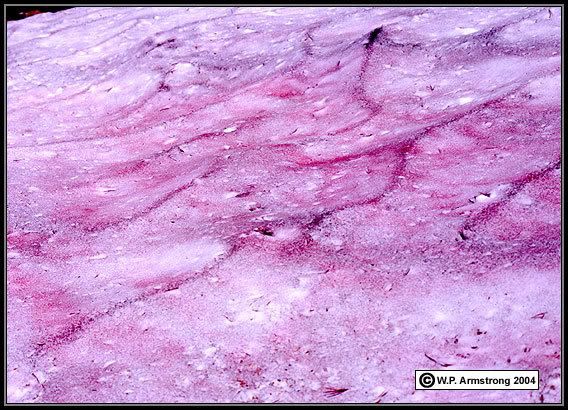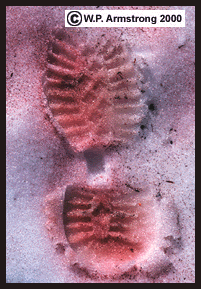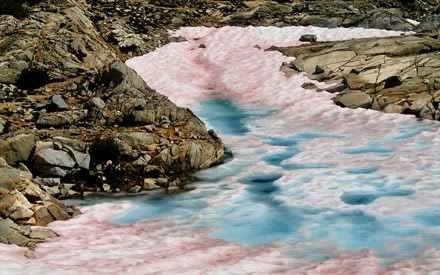Pink snow, sometimes called "watermelon snow," happens during the early spring and summer months where there is still snowpack. It's a phenomenon dating way back in recorded history. In fact, Aristotle mentioned it in some of his writings! I'm not sure why it took so long to identify the cause of it, but at the end of the nineteenth century, the mystery was solved- pink snow comes from microscopic algae. More than sixty different species of snow algae have been identified in the western US mountain ranges, but Chlamydomonas nivalis is responsible for the pink snow. (ironically, it's a member of the green algae Division). Because it's an algae, it has chlorophyll, but C. nivalis also has a carotenoid pigment that gives it the red color. The carotenoid pigment is similar to the ones in tomatoes, red peppers, colorful flowers, seafood exoskeletons, corals, egg yolks, fish/amphibian skin, and fall leaves. They can also be orange, yellow, or yellow-green.
C. nivalis (nivalis means "snow" in Latin) is thought to go dormant when covered by deep layers of snow and then germinate when meltwater brings down nutrients, but scientists aren't exactly sure how the germinated cells then release smaller green cells that flagellate to the surface of the snow to turn pink. Sometimes you see depressions in the snowbanks that are especially red; these are called "sun cups." The red pigmentation absorbs heat, causing the snow to melt faster and cause the depression.



Word to the wise inquiring minds: this search brought up some questionable sites!
Special thanks:
No comments:
Post a Comment